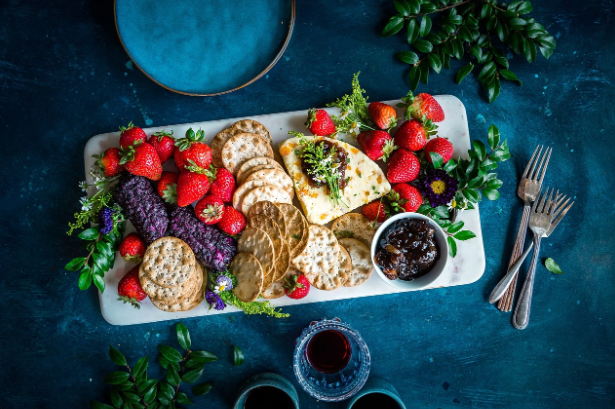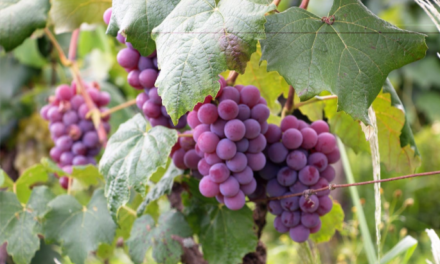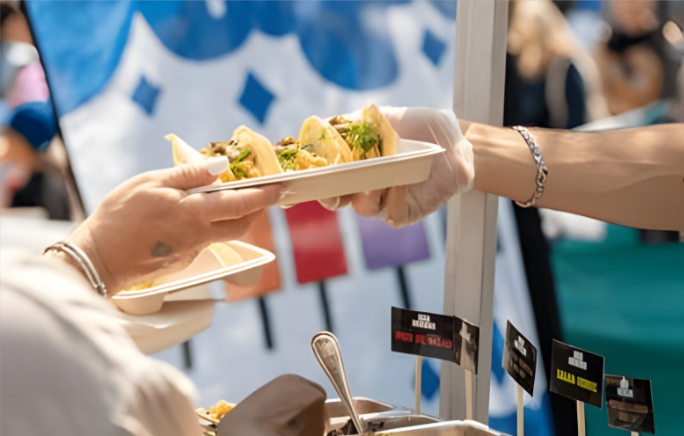Food and wine, a timeless combination that elevates both to new heights. But navigating the world of wine pairings can feel intimidating, especially for beginners. Fear not, fellow gourmands! This guide unveils the secrets to pairing food and wine like a pro, empowering you to create a symphony of flavors on your taste buds.
Understanding the Elements of Harmony:
- Acidity: Acidity in wine acts as a cleanser, cutting through richness in food. Pair high-acid wines like Sauvignon Blanc with creamy sauces or fatty fish. Lower-acid wines like Chardonnay complement richer dishes like roasted chicken or pork.
- Tannins: Tannins are naturally occurring compounds in red wine that create a drying sensation on the palate. Pair bold, tannic wines like Cabernet Sauvignon with robust flavors like grilled steak or hearty stews. Lighter-bodied reds with softer tannins, like Pinot Noir, complement lighter meats or mushroom dishes.
- Sweetness: Wine sweetness should generally complement the sweetness of the food. Pair sweet wines with desserts or fruit-based dishes. Dry wines are better suited for savory meals.
- Body: The body of a wine refers to its weight and mouthfeel. Lighter-bodied wines pair well with lighter dishes like fish or salads. Full-bodied wines can stand up to richer foods like braised meats or pasta dishes.
Simple Strategies for Successful Pairings:
- Match Intensity: Pair bold wines with bold flavors and delicate wines with lighter dishes. A robust Cabernet Sauvignon might overpower a delicate fish dish, while a light Pinot Grigio would be lost against a juicy steak.
- Consider Regional Pairings: Classic regional pairings often offer a good starting point. For example, try pairing French wines with French food or Italian wines with Italian cuisine. These pairings have been honed over centuries and offer a reliable foundation for exploration.
- Think About the Sauce: The sauce often plays a more significant role in pairing than the main ingredient. A creamy pasta dish might call for a Chardonnay, while a tomato-based sauce might pair better with a Sangiovese.
- Don’t Be Afraid to Experiment: These guidelines are a roadmap, not a rigid rulebook. The beauty of food and wine pairing lies in exploration. Experiment with different combinations and discover what works best for your palate.
Beyond the Basics: Advanced Pairing Techniques
- Complementary Pairings: Opposites attract! Pair high-acid wines with fatty foods to create a cleansing effect. For example, Sauvignon Blanc can cut through the richness of a creamy brie cheese.
- Congruent Pairings:Similar flavors can enhance each other. Pair a sweet Riesling with a spicy Thai curry or a fruity Pinot Noir with grilled salmon.
- Consider the Occasion: A casual gathering might call for a lighter, fruitier wine, while a formal dinner might warrant a more complex, aged wine. Tailor your pairing to the overall ambience of the occasion.
Essential Tools for the Pairing Pro:
- Wine Tasting Guides: Invest in a basic wine tasting guide to familiarize yourself with common grape varietals, their characteristics, and suggested food pairings.
- Online Pairing Resources: Numerous websites offer interactive wine pairing guides and recommendations. Utilize these resources to research specific wines and find inspiration for your next culinary adventure.
- Develop Your Palate: The more you taste, the more you’ll learn. Attend wine tastings, sample different wines with meals, and train your palate to identify flavors and textures.
Conclusion:
Pairing food and wine is a journey of discovery. By understanding the basic principles, experimenting with different combinations, and honing your palate, you can elevate your dining experiences and transform meals into memorable culinary symphonies. So, raise a glass, embrace the art of pairing, and embark on a delicious exploration of flavor! Remember, there are no wrong answers, just delicious possibilities waiting to be unearthed.











